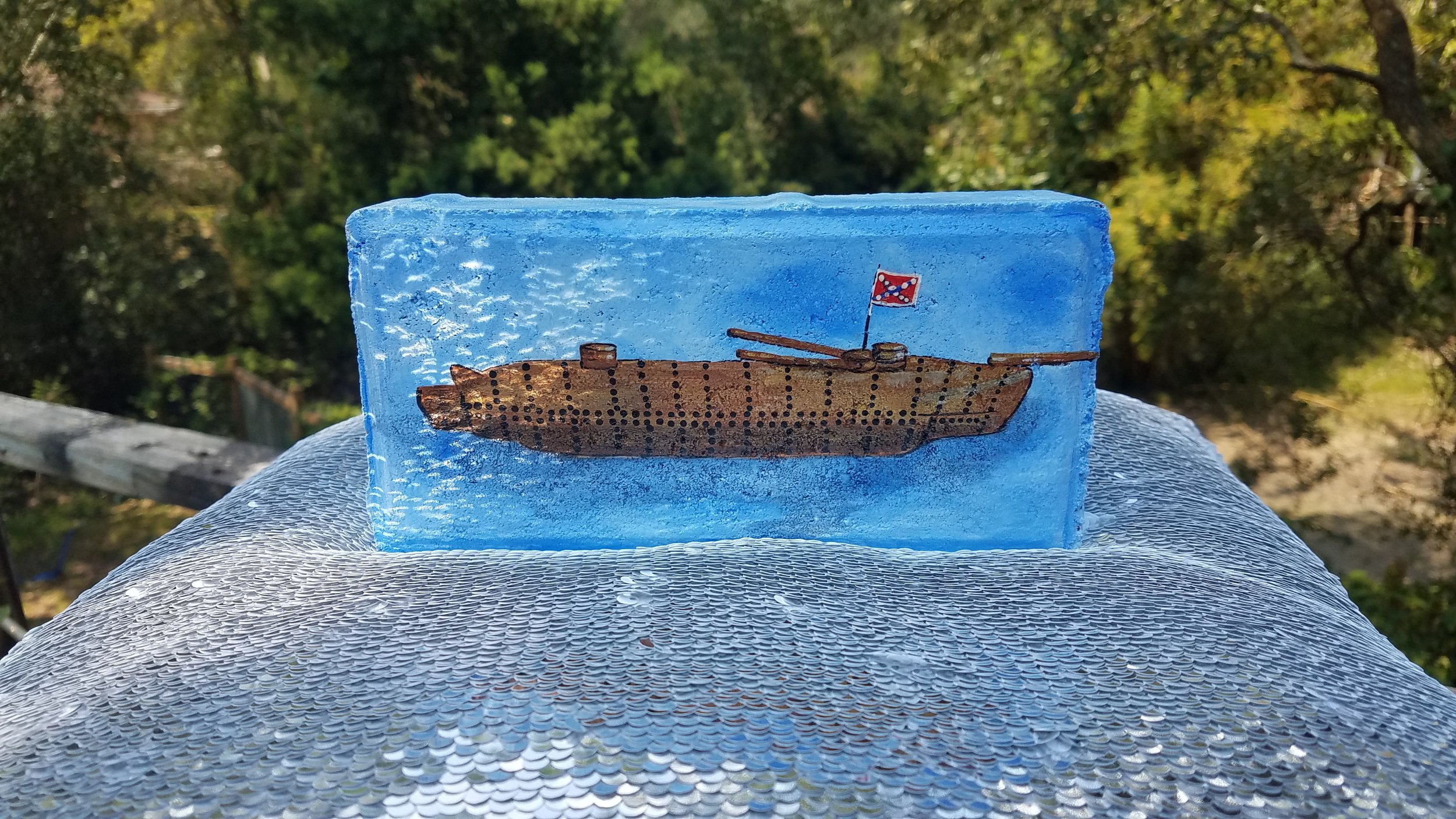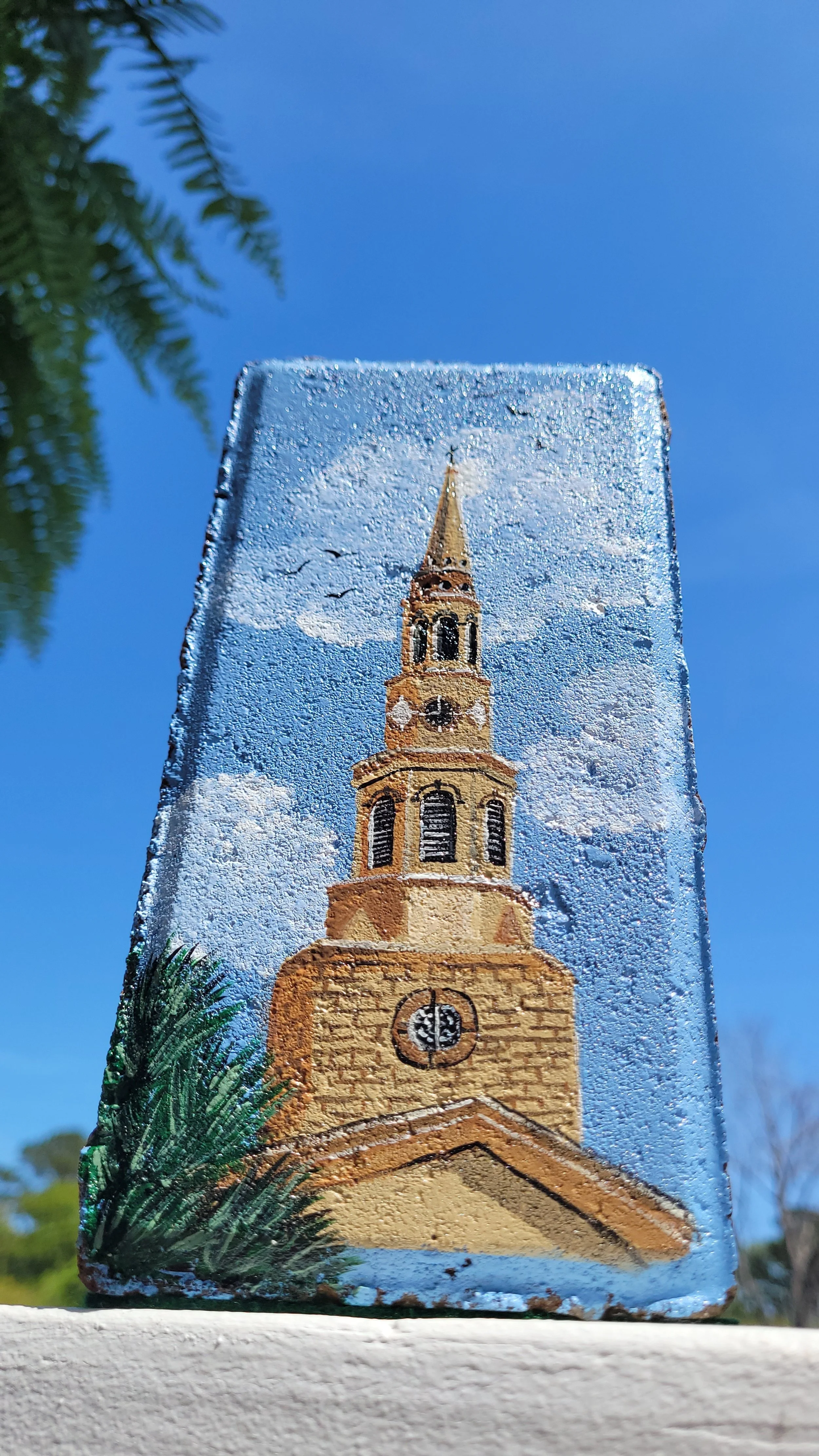
Shop & Such
Aenean lacinia bibendum nulla sed consectetur. Donec ullamcorper nulla non metus auctor fringilla. Duis mollis, est non commodo luctus, nisi erat porttitor ligula, eget lacinia odio sem nec elit. Donec id elit non mi porta gravida at eget metus. Cum sociis natoque penatibus et magnis dis parturient montes, nascetur ridiculus mus.
Hunley Paver Stone
Hunley Paver Stone
- Hand-painted Paver Stone
- Catch one of these aquatic beauties before they're 20,000 fathoms below!
- Each piece is one of a kind created with acrylic paint
A Brief History of the Hunley
Whether it is specific history or history in general that you seek, few iiems hold the significance that the Confederate State Ship (CSS) Hunley does.
Multiple models and working prototypes were built and put to sea with both loss of product and loss of life. While the Hunley cemented its place in marine warfare with success in its mission, its sinking generated much conversation and folklore taking it to the level of the Titanic and other maritime tragedies.
The efforts of multiple designers, builders and investors began in New Orleans, Louisiana. Mr. James Mcclintick and Mr. Baxter Watson began the development of a three-man underwater boat in the late fall of 1861. Horace Hunley’s expertise helped in creating two more crafts that eventually failed to satisfy the underwater testing. The inventors had to scuttle their second craft during subsequent trials due to the fact that the union forces had begun their siege of New Orleans.
With their plans in hand, they fled to Mobile, Alabama and began to put together their third prototype which eventually became the CSS Hunley. After successful sea trials with a towed torpedo, the CSS Hunley was transported by rail to Charleston, SC for its ultimate use there.
Because of conflicts between military authorities and civilian inventors, on August 29, 1863, the Hunley consequently sank at the dock with the loss of five crewmen. Soon after, Horace Hunley arrived in Charleston and demanded return of his vessel. The submarine was found, hoisted from the bottom, and refitted. Again, in October of the same year, the Hunley tests failed with the loss of all on board including Hunley himself. Union spies in Charleston, overhearing gossip from the docks concerning the new war machine, alerted Union superiors to begin developing anti-submarine measures which are still in use today.
Confederate General Beauregard reluctantly allowed both lieutenants Dixon and Alexander’s proponents of the project to move forward. They saw the need to modify the weapons delivery mode because their own spies informed them of the union intelligence. General Beauregard demanded that they operate only on the surface and therefore added urgency to the crucial change that placed the torpedo on a spar which extended from the bow and would need to be rammed into the hull of the target vessel.
In February of 1864, the once again modified Hunley set out into the harbor on its first—and last—official mission: the sinking of the USS Housatonic. The rest as they say, is history...
So, 150 plus years passed with numerous attempts made to locate the Hunley until 1995 when a team with highly sophisticated sonar equipment and submersible vessels pinpointed the wreck. In 2000, a team of maritime recovery experts and historians began the recovery process with millions watching the broadcast.
Many years later, the submarine is still being probed and prodded for any clues as to why it sank on that fateful February night in 1864. There are several strong theories but no definitive answers will ever be gathered without some communication from the eight men on board.
~ David Joyner












